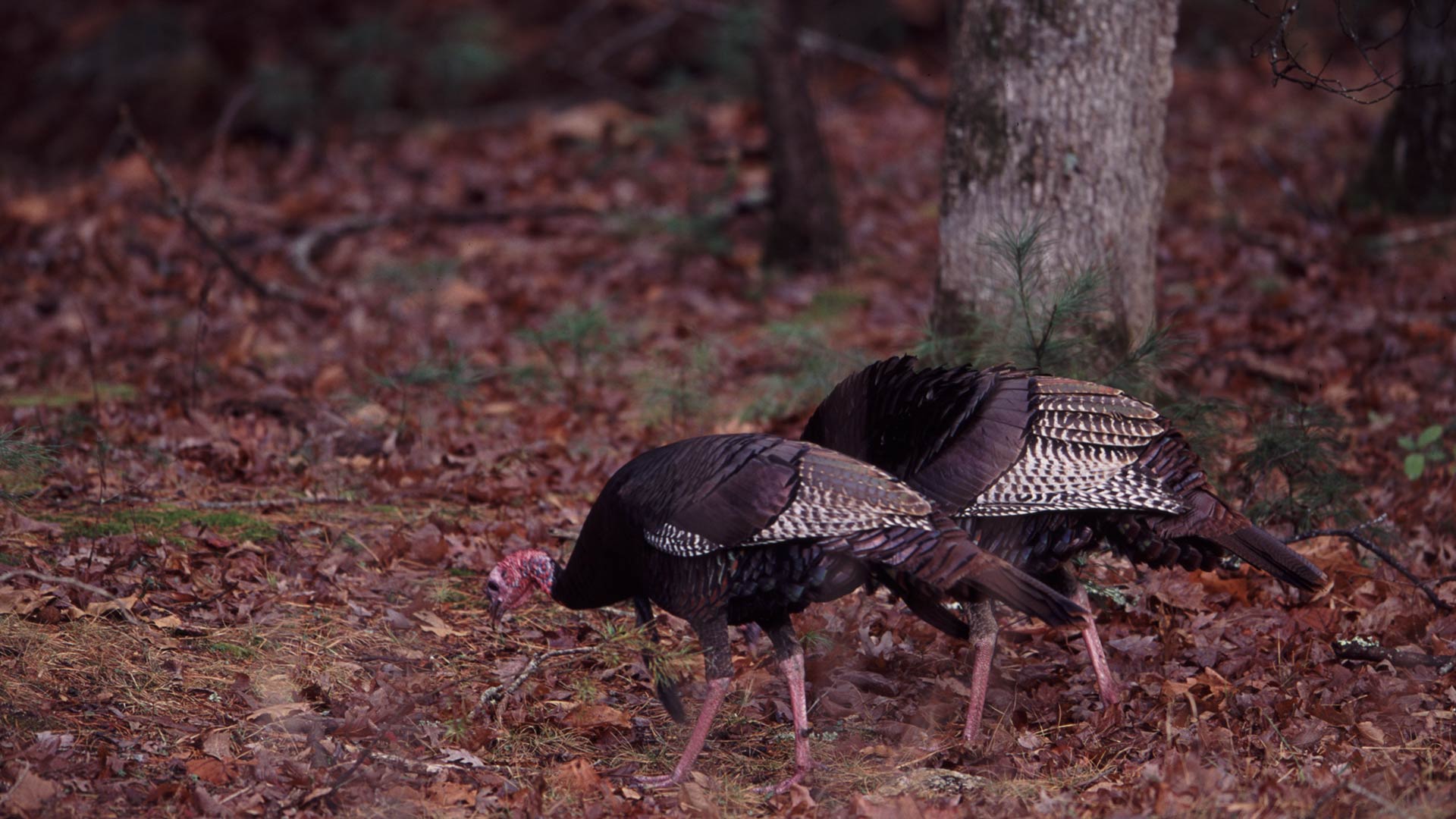Biologists have studied thousands of turkey crops, gizzards and droppings and determined that the big birds are opportunistic omnivores. They will eat virtually any plant or small animal they can put their beaks on!
It is interesting to note that poults are predators when they peck from their eggshells. Tiny turkeys devour flies, moths, beetles, locusts, grasshoppers and other insects, which are high in protein and help them grow rapidly. Poults supplement their diet with seeds, leaves, stems and other plant matter.

As turkeys grow their dependence on insects subsides. Once poults are about a month old, they switch to a diet of mainly plants. Juvenile and adult turkeys feed heavily on hard mast (acorns, beechnuts, etc.), soft mast (grapes, berries and the like), seeds, sedges, forbs, leaves, buds, green shoots and many other types of plants. They visit agricultural fields and food plots to glean corn, wheat, oats, clover, rye and other grains and grasses. The birds supplement their diet with insects, snails, grubs, worms, salamanders, spiders and other small animals.
The availability and abundance of preferred foods can determine the travel patterns of flocks. This is most evident in autumn, when turkeys depend heavily on mast. In a good mast year when acorns, beechnuts, dogwood berries and other fruits are everywhere, turkeys hang in the woods and generally don’t move very far from one food source to the next. But during a lean autumn when mast is scarce, turkeys must travel long distances to find pockets of productive nuts or berries. Also, flocks leave the woods and move out into farmlands where row crops grow.